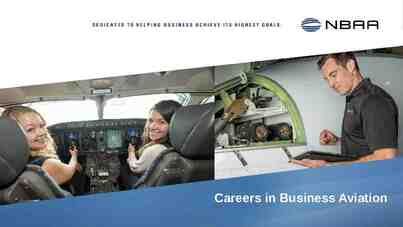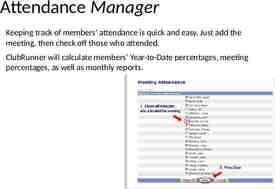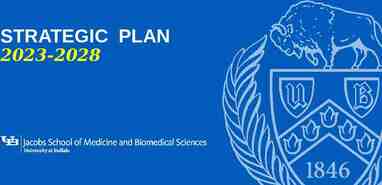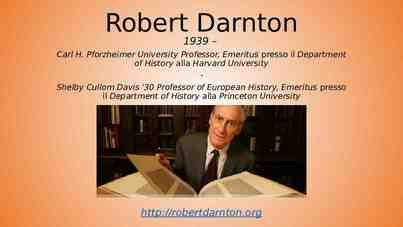Pathways Get On the Right Track to Student Success! Community College
29 Slides2.44 MB

Pathways Get On the Right Track to Student Success! Community College of Baltimore County Presenters: Connie Colclough Kyle Goehner Danielle James Jennifer Kilbourne Renuka Kumar

CCBC Pathways - Goals Success Retention Completion

CCBC Pathways Arts and Humanities Behavioral and Social Sciences Business, Law and Criminal Justice Pre-Allied Health Technology, Science and Math

Pathway Planning and Oversight: A Joint Effort Student Success 102 Team Faculty Academic Pathway Coordinators Pathway Advising Coordinator Pathway Advisors Career Services Liaisons

CCBC’s Pathway Components 1. New Student Orientation 2. Academic Course Tracks 3. Contextualized ACDV 4. Pathway Advisors 5. Blackboard Organization 6. Pathway Activities 7. High Impact Practices

1. New Student Orientation Academic Year Student Participants Increase from Prior Year “New to CCBC Students” 2011-2012 80 -- 0.07% 2012-2013 425 431% 3.90% 2013-2014 758 78% 7.10% 2014-2015 852 12% 8.30% 2015-2016 994 17% 10.40%

Lessons Learned Student Perspective: If students are scheduled for an orientation, most will come. If just told that orientations are offered, they will not attend. Faculty Perspective: Faculty believes in the importance of the orientation and will attend. Faculty frustrated by lack of time during orientation to meet with students.

2. Academic Course Tracks Faculty teams developed specific course tracks to assist students with course selection during their first two semesters. Course tracks limit registration errors that lead to unnecessary courses and allow for degree completion in a defined period of time. The number of course tracks for each Pathways depends on the areas of concentration. Many courses in the first two semesters are General Education requirements.

Lessons Learned Course sequences should be flexible to allow for changes in area of concentration but structured enough to make sure students know what they need to take to complete a degree. Fewer course sequences per Pathway would further reduce backtracking when students change majors.

3. Contextualized ACDV Five specific contextualized sections of ACDV developed. Each section, with multiple offerings, focuses on one of the five areas of study (Sections offered on all campuses and extension centers). Contextualized sections include: – Welcome letter to Pathway – Career information – Course work based on the area of study – ie. White Collar Crime lecture – Pathway contextualized textbook materials – Pathway-specific Active Listening and Note taking Skills – Incorporation of the Pathway activities

Lessons Learned Approximately 49% of students in all ACDV sections placed in the appropriate contextualized section. Student registration based on convenient time, not Pathway. Incorporated lectures could be improved-Students would rather see the Pathway instructor f2f and not via video. Cohort effect was not achieved. Authentic experience in Pathway was not achieved. Are we trying to mold our curriculum to meet the needs of Pathways? Do we need a to take a closer look at the curriculum?

4. Pathway Advisors Pathway advisors are “information specialists”. Provide information about academic pathways, course-tracks and high-impact activities. Information is provided one-on-one, at group presentations and at conferences. Collaborate on the design, development and implementation of pathway-related activities. Staff pathway events. Produce and distribute a newsletter entitled “Pathways Today” each fall and spring semester.

Lessons Learned Enhanced Information Dissemination - Provide more information updates to academic advisors and enrollment and student services staff to increase student participation in pathway activities and events (e.g., informational handouts; flyers; and through e-mail). Pathways Today Newsletter – Circulation Increased - The 2nd edition of the newsletter was e-distributed college-wide to staff and faculty. Training and Development Opportunities - Interested part-time pathway team members are being encouraged to co-develop and co-train with the pathway coordinators when opportunities for pathway presentations arise.

5. Blackboard Organization Set up organizations to communicate with students, faculty. Students automatically 3nrolled based on major code. Faculty, staff have to self-enroll. “Connective Tissue” for wider Pathway.

6. Blackboard Organization

Lessons Learned Try to set up early and accurately Aggressively solicit faculty adoption

6. Pathway Activities Benefits: Meet faculty and program coordinators. Meet and connect with advisors. Learn about majors and programs. Explore career possibilities. Network with other students and create a cohort. Network with alumni and learn from their experiences. Experiential learning through field trips and internships.

Fall 2015 Pathway-Related Activities Pathway Kick-off Events Career Events Test-Prep Sessions Constitution Day Lectures Bus Trips to the Supreme Court Transfer Events Internship Workshops

Pathway Events

Attendance at all Pathway Events Fall 2015: Arts and Humanities Behavioral and Social Sciences Business, Law and Criminal Justice Pre-Allied Health Technology, Science and Math 1,271 students

Lessons Learned Challenge: Student attendance Possible solutions: – combine Welcome Event by all pathways – combine events with other CCBC organizations – faculty encourage attendance – increased advertising of events – day and evening times

7. High Impact Practices Deepened Student engagement in work. Reflective component to bring together coursework and career and transfer goals. Forge connections between work in the classroom and support outside of the classroom.

Definition of High Impact Practices Require effort Help students build substantive relationships with peers and faculty Help students engage across differences Provide meaningful feedback Help students apply learning in new situations Provide opportunity for reflection

What is high-impact infusion? Service Learning Diversity/Global Learning Common Intellectual Experience Learning Communities Writing-Intensive Courses Collaborative Assignments and Projects Undergraduate Research

Lessons Learned Start early Build on institutional strengths Engage faculty leaders as advocates Bottom up approach Make “value” proposition clear to faculty

Looking to the Future for CCBC’s Pathways Faculty Mentoring - a pilot group of faculty will mentor general studies students in Fall 2016.

Questions? Comments?

Contact Jennifer Kilbourne [email protected]

Activity Get in small groups . . . 1. What are some ideas to promote student attendance at pathway-related activities? 2. What additional activities would you suggest that would benefit students . . . activities that encourage success, retention and completion?






